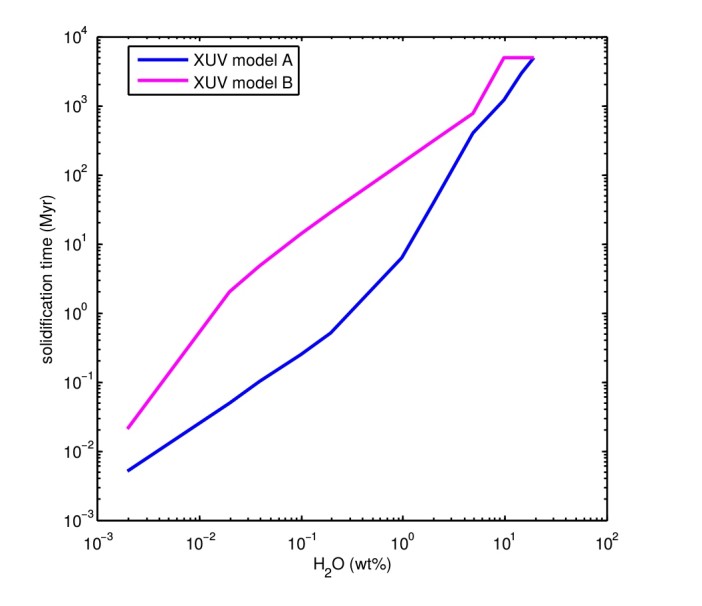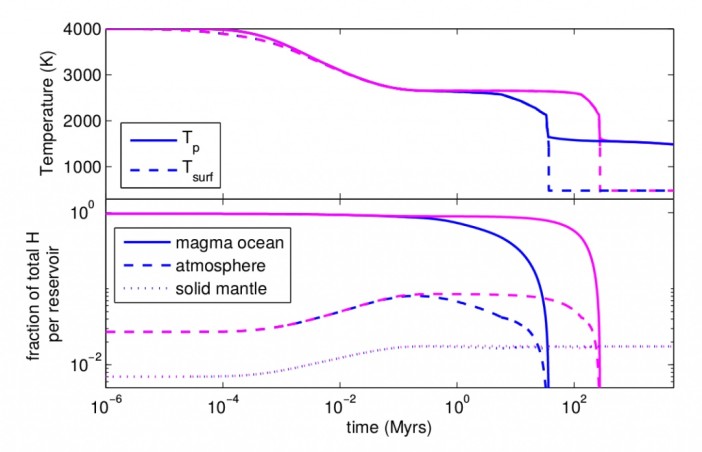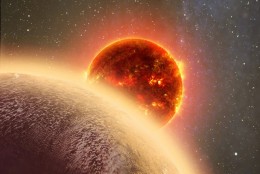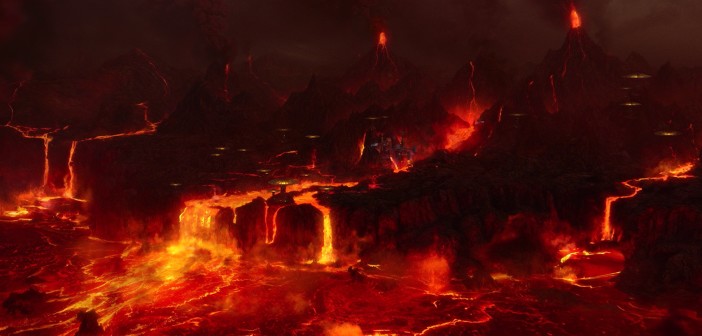Editor’s note: Astrobites is a graduate-student-run organization that digests astrophysical literature for undergraduate students. As part of the new partnership between the AAS and astrobites, we will be reposting astrobites content here at AAS Nova once a week. We hope you enjoy this post from astrobites; the original can be viewed at astrobites.org!
Title: Predictions of the Atmospheric Composition of GJ 1132b
Authors: L. Schaefer, R. D. Wordsworth, Z. Berta-Thompson, and D. Sasselov
First Author’s Institution: Harvard-Smithsonian Center for Astrophysics
Status: Accepted for publication in ApJ
Pictured above is Mustafar, a world covered in red-hot magma (or lava, if you prefer). Mustafar is from Star Wars (and, I’m afraid, from the prequels), but there are several non-fictional planets that might be real-universe “lava worlds”, due to their intense heat. The Earth, and the other rocky planets of our solar system, are believed to have formed with temperatures high enough for their surfaces to be molten. In today’s article, we take a look at how this “ocean of magma” might affect the way that a planet’s atmosphere evolves.
The article’s authors studied the evolution of planets with water-dominated atmospheres — in particular, the rate of loss of the water’s constituent hydrogen and oxygen parts (the two are not necessarily lost at the same rate). This loss happens by several mechanisms. Of most interest to us today is a so-called “thermal escape mechanism”, in which a particle with enough energy can travel fast enough to break free of the planet’s gravity and escape into space. In this way, hydrogen will be lost faster than oxygen, because its lower mass means it needs less energy to escape. The energy in this case comes from radiation from the planet’s host star, particularly in the ultraviolet (UV) part of the electromagnetic spectrum.
Where does the magma come in?
One possible solution to this puzzle might involve interactions between the planet’s atmosphere and its surface, particularly when the surface is molten, as water can dissolve in molten rock. Today’s authors attempted to include these interactions with the planet’s surface in their models of a planet’s atmosphere. The surface in their models begins as an ocean of magma, then slowly cools to solid rock. The team then attempted to model a water atmosphere, allowing H and O to both escape into space and dissolve into the surface.

Figure 1: The solidification time of the magma ocean depended on the amount of water in the atmosphere — the more water there was, the slower the ocean solidified, because of the greenhouse effect. The ocean also lasted longer in models with less radiation from the star (magenta) than in models with more radiation (blue). For models in which more than 10% of the planet’s mass was water, (the top of the lines here), the magma lasted for the entire length of the calculations, a total of 5 billion years! [Schaefer et al. 2016]
The team found that the length of time it takes the ocean to solidify depends strongly on the amount of water they give the atmosphere at the start of their models — water is a greenhouse gas, and so the more water there is in the planet’s atmosphere, the longer it takes the planet to cool. They found that the atmospheric composition at the end of their models depended on the atmospheric composition at the start, on the amount of UV light hitting the planet, and on the composition of the magma ocean.

Figure 2, above: the temperature of the planet’s mantle and surface evolving over time, for models with more stellar radiation (blue) and less (magenta). Below: The fraction of the total amount of water contained in the magma ocean, the atmosphere and the solid mantle over time. The magma ocean’s fraction drops off as the ocean solidifies, and almost all of the atmospheric fraction is lost to space; however, the fraction trapped in the solid mantle increases as the ocean solidifies, and remains after the rest is lost. [Schaefer et al. 2016]

Artist’s illustration of the rocky exoplanet GJ 1132b, which orbits a red dwarf star and may host an atmosphere. [Dana Berry]
Observations of GJ 1132b should be able to measure its atmospheric composition and test the team’s predictions. Until then, their model is applicable not only to plenty of other exoplanets, but also to Venus, where they expect the magma ocean to have cooled much faster due to Venus’ greater distance from the Sun.
About the author, Matthew Green:
I am a first year PhD student at the University of Warwick. I work with white dwarf binary systems, and in particular with AM CVn-type binaries. In my spare time I enjoy writing of all kinds, as well as playing music, board games and rock climbing. For more things written by me, take a look at my website.

